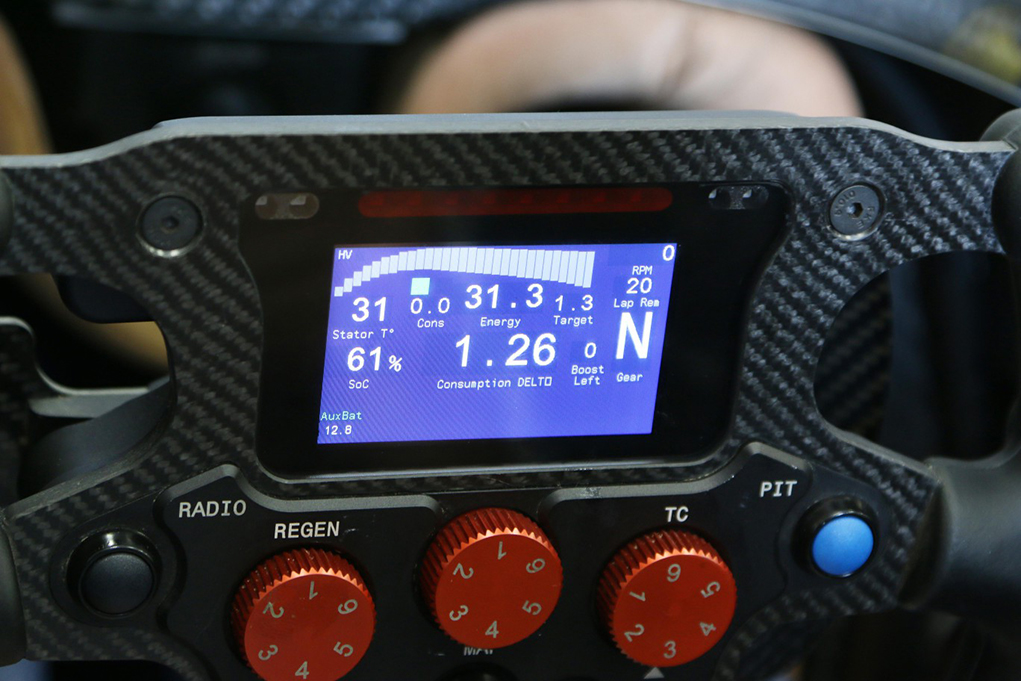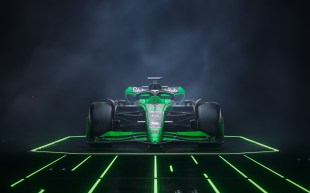Greased lightning: Tiff Needell drives Formula E pure-electric racer
For this old petrolhead the spark just isn't there
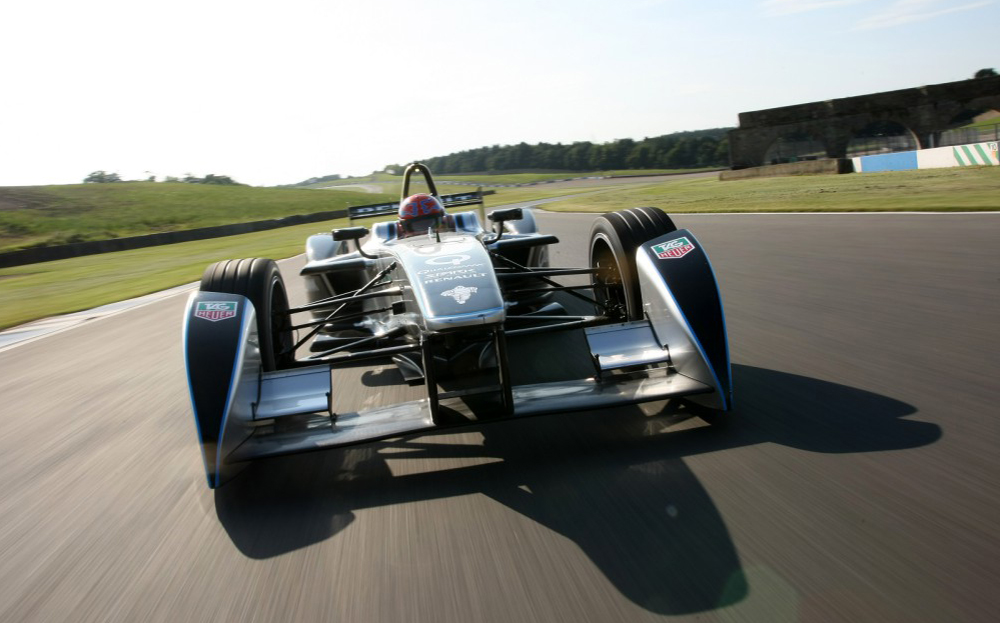
THERE AREN’T many types of car I haven’t driven. I’ve ticked off road cars, racing cars, Le Mans prototypes and even Formula One cars. But until last week I had never driven a battery-powered single-seat racing car. Then again, apart from those preparing to compete in it, neither has any other racing driver.
You’ve probably heard of Formula E, the all-electric racing series that aims to rejuvenate interest in motor sport while proving that burning around a track at 140mph doesn’t need to be bad for the polar bears. Oh, and along the way it also wants to act as a showcase for electric-car technology, proving to people that ordinary civilian battery-powered vehicles such as the BMW i3, Nissan Leaf, Renault Zoe and the rest can be fun to drive and sexy to look at and won’t run out of juice during rush hour in the outside lane of the M62 on a drizzly November evening.
Well, good luck with that. What I want to know is, how well does this car drive? Can a battery-powered car really be as much fun as a V8 — or now V6 turbo — F1 machine? Is it even as good as a Formula Three car? And what about the spectators? What sort of experience are they in for when the Formula E series kicks off next month in Beijing?
Click here to search for used cars on driving.co.uk
The first thing to say is that the Formula E operation looks the part. It is based at Donington Park in Leicestershire, and while a number of its drivers seem to be from the “so nearly made it in F1” list, it has some big names behind it. Renault, Williams and McLaren, which between them have conceived and built the Spark-Renault SRT_01E, don’t do things by halves.
The car itself — all teams use the same model — looks similar to an F1 machine: a single-seat open-wheel racer with futuristic-looking front-wheel hoods that poke out menacingly from the nose. When I slip into the cockpit, the difference is pretty clear. For a start, I really do slip, rather than squeeze, in. I have never driven an F1 car that is happy to accommodate a 6ft frame, but this racer is almost comfortable. As with F1, your legs are channelled into two tunnels, which house a brake and throttle.
Then the steering wheel is slotted into position. As in F1, it is a complicated- looking piece of kit, but all the dials, displays and paddles are different. For instance, you have four paddles to play with: the usual ones to change gear, plus one for overtaking and one for battery regeneration — about which I’ll explain more later.
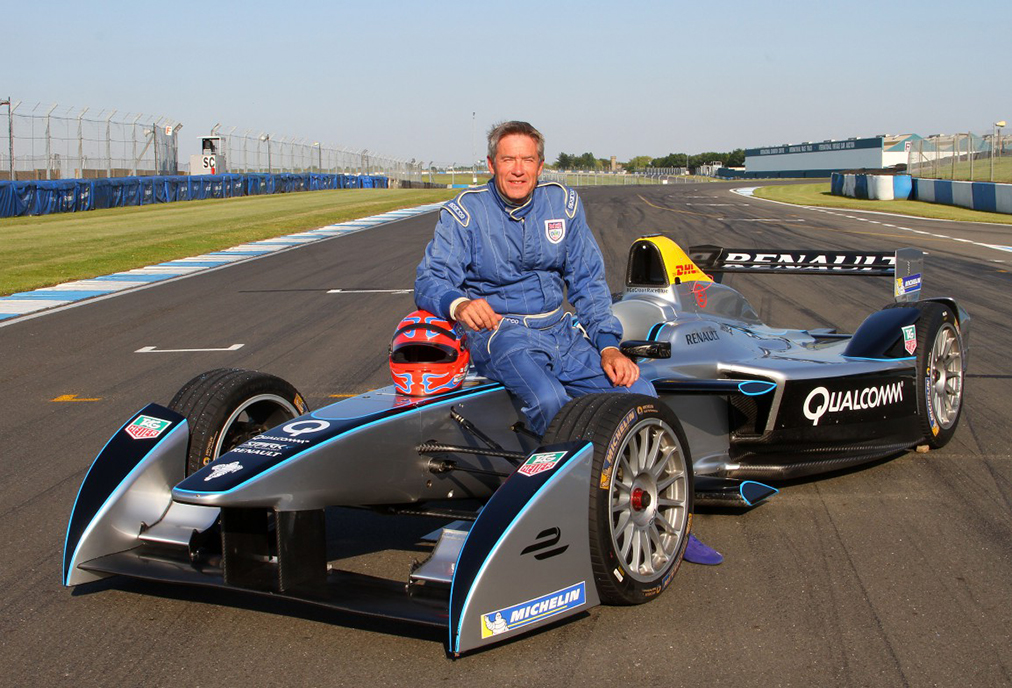
There is also a dial for choosing from six power settings that you’ll need to manage your battery usage. Positions 1-5 are for the race and provide up to 228bhp, while 6 gives the maximum 268bhp, which drivers can use during practice and qualifying and, if they are one of the three winners of an online popularity vote, for five seconds during the race. Managing that output is probably the biggest challenge for the drivers, as they’ll have to spend much of the race using the lower settings.
The giant 320kg multi-cell lithium-ion battery sits right behind you, accounting for a quarter of the car’s 880kg minimum weight (including the driver), and it’s packed with 30 kilowatt hours (kWh) of energy — equivalent to 10,000 alkaline AA batteries. Each driver is allowed to use 28kWh in the race, but by deploying the regeneration capability as efficiently as possible, they can make it last longer. This is going to be thinking man’s racing.
But forget the tactics for now — let’s drive electric. No clutch pedal, of course, but I need 20 bars of brake pressure before a tug on the “up” paddle allows me to engage first gear. Release the brake and, accompanied by a gentle whirring sound, I’m off down the pit lane.
I know that at this point I am supposed to say the instant torque, silky-smooth power delivery and otherworldly punch of the electric power is awe-inspiring . . . but I’m afraid I can’t. At power setting two the car doesn’t really come alive. Gentle understeer is the order of the day, and even on the tightest hairpin there isn’t enough grunt to unstick the surprisingly grippy Michelin rubber.
I know that at this point I am supposed to say the instant torque, silky-smooth power delivery and otherworldly punch of the electric power is awe-inspiring . . . but I’m afraid I can’t.
Quickly switching to levels three and four brings a distinct improvement, and a test of the “overtake” paddle that takes you straight to five makes things a lot more interesting. The gearchange lights begin to come on more quickly as the 14,000rpm limit demands another shift. At the Old Hairpin I try to use only paddle-controlled regeneration to slow the car, but quickly find myself adding foot brake.
I am vaguely aware that something is not as it should be. It’s not the whine of the engine — which I have been expecting. It is another noise, something I have never heard before in more than 40 years of racing. For a while I can’t put my finger on it, but then it comes to me. That roar. That whistle. It’s the sound of the air as it rushes around my helmet. The sound of the wind as you tear around a circuit is usually drowned out by the engine, but in the near silence of the Formula E car it is what you hear most. It is a strange and beautiful sound and in an odd way it brings you closer to the sensation of speed.
To get the full experience, all I have to do now is try power position 6. Of course the drivers would love to deploy this all the time but they can do so only in practice and qualifying and, in the case of the favoured three, for the five-second “push to pass” power boost. Prolonged use not only drains the battery but quickly takes the system to its maximum temperature of 140C.
Now we’re talking. Or rather shouting. The car takes off as if it’s put its tailpipe in an electric socket. At the end of the main straight and bottom of the Craner Curves, the gearchange lights are flashing in top gear as I touch the car’s 140mph maximum, but on the second lap the lights are no longer there as the temperature has hit that maximum and the power is reduced automatically.
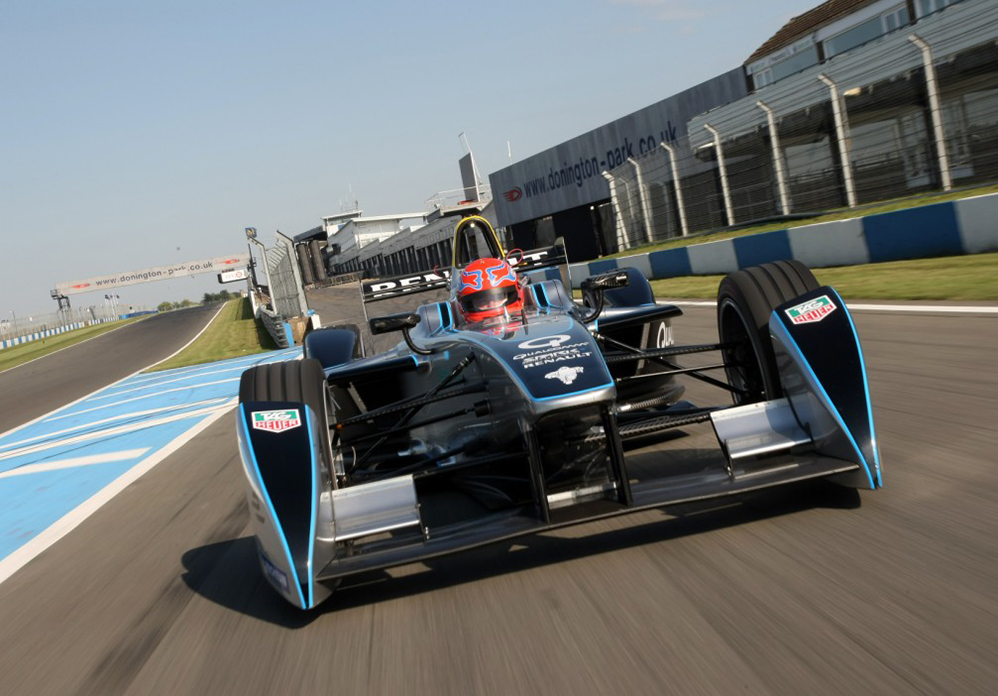
Donington isn’t the ideal test track for the car, as full throttle down the long straights quickly saps the battery. That’s why the city-centre courses used in the Formula E grands prix are short laps with lots of corners: it’s what they need to make the power last. It may create the odd low-speed procession but this is all part of the development of the series.
I pull into the pits and clamber out. The car feels hot, but there is none of the usual smell of hot oil and fuel that fills your nostrils after a race; only a faint smell of hot rubber from the tyres. I look at the car. Am I convinced by it?
This is a car for the PlayStation generation, to whom the pushing of buttons and digital readouts come as naturally as yanking a gearstick and cursing a missed gear come to me.
Let me put it this way. I am an old-fashioned racer. This is a car for the PlayStation generation, to whom the pushing of buttons and digital readouts come as naturally as yanking a gearstick and cursing a missed gear come to me. Is it the future? It’s never going to replace conventional racing, but it’s another event that pays drivers to compete, and I hope it develops and grows.
I have nothing but admiration for the top-notch engineers and designers who have put this car together. It is an ambitious and interesting project, and the spectators — who will be able to get up close on the city streets — will get a far better view than they do in F1.
But — and this is, I’m afraid, where I show my age — give me the choice between this machine of the future and a 1977 F3 racer tearing around Monaco in the afternoon sun, with the sound of the engine in my ears and the smell of four-star in my nostrils, and I know which one I would take.
Tiff’s verdict ★★★☆☆
Give me a dirty four-star car any day
2014 Spark-Renault SRT_01E specifications
Motor: 2 x permanent magnet synchronous
Power: 170kW/200kW (228bhp/268bhp)
Transmission: 5-speed sequential
Performance: 0-62mph: 3sec (estimated)
Top speed: 140mph
Battery Life: 25min (at race speed)
Weight: 880kg minimum(including driver)
Price: £1m (estimated)
To vote for your favourite driver to win the “push to pass” power boost, go to fanboost.fiaformulae.com.
Get a grip: a guide to the Formula E car’s controls
- Gearchange paddles: As in F1, drivers use paddles behind the middle of the steering wheel grips to select gears. Left to change down; right to shift up.
- Power paddles: A small lever at the top of the left grip provides a power boost for overtaking or defending your position. The one at the bottom right of the wheel triggers regenerative braking, which will charge the battery and slow the car without the full force of hitting the brake pedal.
- Dials: The right-hand dial limits power (it is wrongly labelled on this prototype). No 6 equates to full power but will overheat the system if used too much. The left and middle dial control regenerative braking (via pedal and paddle, respectively). The higher they are set, the more energy is stored, but again the system may overheat.
- Display: As well as revs and gear selection, this shows the energy remaining in the battery. The optimum energy use per lap is to the top right. Dead centre is the amount expended in the previous lap — too high and the battery will go flat too soon.
- Buttons: A simplified version of F1 steering-wheel buttons: red scrolls through display information, green is reverse gear, white is neutral, black is the radio and blue is the pit lane speed limiter.
Click here to search for used cars on driving.co.uk


